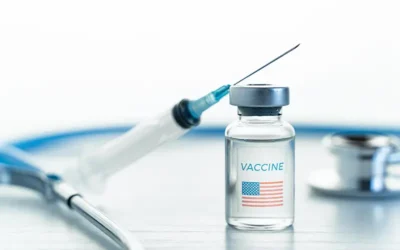Reporting skin procedures is complex as the codes should be assigned based on the type of removal, the size and location of the lesion, the provider’s intent, and pathologic results. Outsourcing the task to an experienced medical billing and coding company is a feasible strategy, but dermatologists should know the rules and document their services appropriately using the right terminology. This is important to lead the dermatology medical coding service provider to the right codes. Here are some important considerations for successful coding of four common skin procedures – excision, biopsies, removal by shave, and destruction of warts. These are distinct procedures and have different CPT codes.
- Excision: In this procedure, the skin lesion is removed completely by cutting completely through the dermis (full-thickness removal). The dermatologist should take care not to use the term “biopsy” in the documentation as it can lead the medical coding company to wrongly code the procedure as a biopsy, leading to in less reimbursement. Points to note:
- The size of the lesion as its maximum diameter as well as the sum of the narrowest margins used to excise the lesion should be reported.
- The code will also depend on whether the lesion is benign (CPT codes 11400-11446 – excision of benign lesions of cutaneous origin such as a sebaceous cyst) or malignant (11600–11646). An AAPC article provides the following example of excision coding: A malignant lesion is excised from a patient’s right shoulder. Prior to excision, the lesion measures 1.0 cm at its widest. To ensure removal of all malignancy, the surgeon allows a margin of at least 1.0 cm on all sides, for a total excised diameter of 3.0 cm (1.0 cm + [2 x 1.0 cm]). The correct code is 11603 Excision, malignant lesion including margins, trunk, arms, or legs; excised diameter 2.1 to 3.0 cm.
- The American Academy of Dermatology cautions that vessel exploration and/or neuroplasty should be reported separately. Further, when coding musculoskeletal procedures, the excision performed should meet the criteria listed in the code descriptor. The physician must determine and document the depth of the excision to determine whether the integumentary system or musculoskeletal system CPT codes are appropriate.
- Simple closure is always included with excision code and not coded separately while intermediate and complex closure can be reported additionally.
- Multiple excisions require a modifier. Each lesion excision should be treated as an individual and separate procedure, and a verifiable diagnosis should be linked to each individual CPT code for multiple excisions. Modifier 59 Distinct procedural service should be linked to the second and subsequent codes describing excisions at the same location to avoid duplication denials.
- The difference between excision and other techniques is that excision requires removal of the entire thickness of the dermis through to the subcutaneous tissue.
If skin lesions (11400-11646) are reported in addition to other procedures at the anatomic site, AAPC cautions that providers should take care to avoid bundling issues.
- Biopsy: A biopsy is described as an “independent procedure to obtain tissue for pathologic examination.” The basic assumption is that neither definitive clinical nor histologic diagnosis exists prior to biopsy and that the purpose of the procedure is to help establish the nature of the lesion. A biopsy usually means that the physician has partly removed the growth. Points to note:
- A biopsy should be billed only when tissue is removed for analysis.
- The method of biopsy can be removal by scissors, shaving with a blade or specialized instrument to any level including the subcutaneous fat, extraction using a punch, and excision down to the subcutaneous fat with a scalpel.
- For the first biopsy, submit 11100 (Biopsy of skin, subcutaneous tissue and/or mucous membrane [including simple closure], unless otherwise listed; single lesion) for the first biopsy.
- For each separate biopsy after the first one, use add-on code 11101(Biopsy of skin, subcutaneous tissue and/or mucous membrane [including simple closure], unless otherwise listed; each separate/additional lesion [List separately in addition to code for primary procedure]). For e.g., if three lesions are biopsied, codes 11100, 11101 and 11101 should be submitted If skin biopsy is performed more than the maximum number of times, it is important to submit supporting documentation to avoid denials.
- If the removal is simply for diagnosis, the procedure is coded as a biopsy. If the entire lesion is removed, the excision codes should be used.
- Shave: This procedure involves horizontal cutting to remove a lesion. This is a therapeutic procedure intended to remove a lesion or the problematic portion of the lesion. AMA CPT defines shaving as “the sharp removal by transverse incision or horizontal slicing to remove epidermal and dermal lesions without a full thickness dermal excision. This includes local anesthesia, chemical or electrocauterization of the wound, and does not require suture closure.” Removal by shave is reported using CPT codes 11300 – 11313 Shaving of epidermal or dermal lesions. Points to note:
- Each shaved lesion treated is reported separately
- To assign the proper code, the anatomic location and size of the lesion need to be documented.
- Removed tissue is usually submitted for pathologic examination, but this is not a separate biopsy procedure and cannot be reported as such.
- Wart and keratosis destruction: Application of acid, freezing, laser or electrocautery is used for treatment of common warts, plantar warts, actinic keratosis and seborrheic keratosis. CPT codes 17110 and 17111 are used for destruction of common or plantar warts. CPT codes 17110 and 17111 include destruction of benign lesions other than skin tags or cutaneous vascular lesions.
- 17110 – Destruction (e.g., laser surgery, electrosurgery, cryosurgery, chemosurgery, surgical curettement), of benign lesions other than skin tags or cutaneous vascular lesions; up to 14 lesions
- 17111 – 15 or more lesions
To assign the appropriate code for maximum reimbursement, the documentation should specify diagnosis of the different types of warts, where they are located, and their size.
A Dermatology Times article titled ‘Coding 2017 and Beyond’ noted that dermatologists can expect more audits by the OIG, Medicare’s Comprehensive Error Rate Testing (CERT) program, zone program integrity contractors (ZPIC) and recovery audit contractors (RAC). A Medicare Learning Network document stresses that to avoid audits, physicians must submit highly detailed documentation, including histopathology, with Mohs operative notes, although local carrier directives may not include this information. Partnering with an experienced medical coding company can help dermatology practices can ensure accuracy in coding and documentation to avoid unwanted scrutiny and optimize reimbursement.




